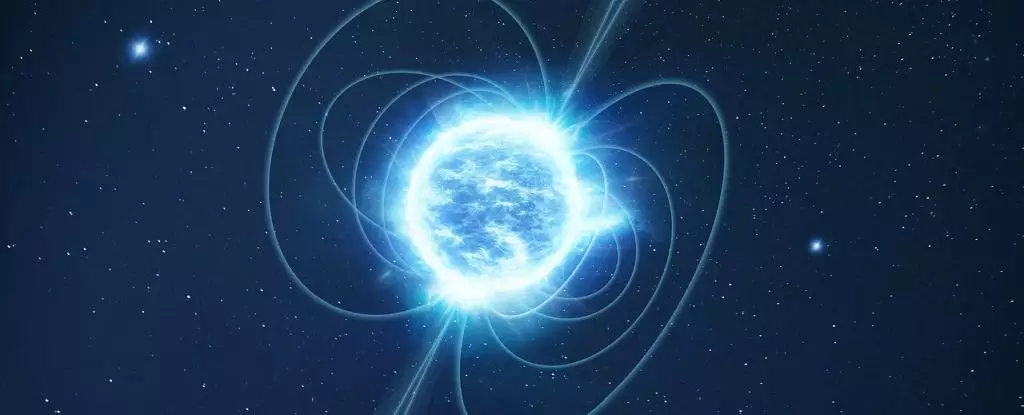On the fringes of our galaxy, the mysterious SGR 0501+4516 has drawn the attention of astronomers, challenging our understanding of neutron stars, particularly magnetars. These celestial anomalies, characterized by their extraordinarily potent magnetic fields, possess the potential to rewrite the narrative of star formation in our universe. The collaborative efforts of the Hubble and Gaia space telescopes have peeled back the layers of mystery surrounding this magnetar. Initial theories regarding its formation arc were thought to hinge closely on the events of a core-collapse supernova, but recent research has lead us to question everything we thought we knew.
Neutron stars, which are the remnants of massive stars that have exhausted their nuclear fuel, experience catastrophic gravitational collapse, resulting in some of the densest objects known to exist. Among these, magnetars stand out due to their unparalleled magnetic fields, which are roughly a thousand times stronger than those of typical neutron stars, and quadrillions of times mightier than Earth’s own magnetic pull. This makes their formation and characteristics all the more intriguing and, until recently, somewhat predictable—until our understanding was turned upside down by the enigmatic SGR 0501+4516.
Stretching the Limits of Our Knowledge
Astronomers initially believed that SGR 0501+4516 was linked to a nearby supernova remnant, HB9, due to its location. They hypothesized that the magnetar was born from the same cataclysmic event that produced HB9. However, detailed measurements of its movement revealed a disconcerting divergence from expectations; the velocity and proper motion indicate that this magnetar’s birth must be linked to a much older event or perhaps an entirely different scenario. The Hubble Space Telescope, aided by precise data from Gaia, was instrumental in mapping these movements, yielding results that defy previous assumptions.
This staggering revelation raises a plethora of questions: How can such a powerful and chaotic entity exist in isolation? If SGR 0501+4516 is indeed around 20,000 years old, could it have outlived its associated supernova remnants? This hypothesis, however, contends against existing theories, as magnetars are believed to be short-lived compared to the stellar lifespans they originate from. The complexity of this scenario only deepens as researchers explore alternative possibilities of formation.
The Case for Alternative Birth Mechanisms
Perhaps the most exciting implication of this research is the suggestion that SGR 0501+4516 may have formed not from a core-collapse supernova but rather through a merger of astrophysical objects—potentially a white dwarf amalgamating with a neutron star. According to Andrew Levan of Radboud University, white dwarfs often have binary companions from which they can absorb mass. Under certain circumstances, this absorption can destabilize the white dwarf, resulting in a collapse into a neutron star rather than a supernova explosion. If true, this theory could provide groundbreaking insight into a non-traditional pathway for the formation of magnetars.
The prospect of such an origin challenges conventional wisdom in stellar evolution and invites a reassessment of how we understand the lifecycle of stars. Magnetars might not only be rare artifacts of supernova explosions but could instead represent an entirely different class of celestial objects born from unique astrophysical interactions.
Shifting Perspectives in Astronomy
As we delve deeper into the cosmos, findings like those surrounding SGR 0501+4516 remind us of the vast unknowns still lurking in the shadows of our galaxy. Each discovery has the potential to reshape our understanding of the forces and processes that govern star formation and evolution. The implications extend beyond mere academic curiosity; they challenge existing frameworks of astrophysics, forcing scientists to reconsider elements such as stellar pairing, mass transfer, and the complexities of gravitational interactions among cosmic entities.
The unexpected twists in the narrative surrounding SGR 0501+4516 do more than raise intriguing questions; they evoke a sense of excitement about the potential for future explorations. Every uncharted corner of the universe presents a new frontier waiting to be explored, fueling the desire to understand the enigmatic forces shaping our galaxy.
The journey into the mysteries of magnetars like SGR 0501+4516 epitomizes the thrill of scientific discovery. With each observation and data point, we inch closer to a richer understanding of our universe—one filled with awe and wonder, waiting to reveal its secrets. Indeed, as we grasp for answers, we realize that sometimes, the real value lies in the questions themselves.

